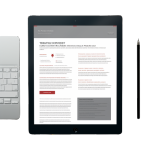
The restaurant industry continues to trudge through general softness, with Technomic data showing that 2024 was the slowest year for sales in 10 years at the top 500 chains.
Are the industry’s challenges impacting independents as deeply? According to Diane Hund, chief marketing officer at US Foods, yes. But, she adds, significant challenges have always existed for smaller operators. The broadline distributor has a firm pulse on the segment, working with more than 250,000 locations, most of them independent or small multi-unit restaurant brands. Those operators are increasingly seeking solutions on how to lower food costs, navigate higher wages, and turn around negative traffic trends.
“I’m not sure the macroeconomics have changed that much in the past few years, but some are more dialed up and others are dialed down,” Hund said during a recent interview. “Operators today are focused more than ever on how to grow. Not survive, but grow. You have to grow your market share.”
To achieve such momentum, it’s critical to understand your profitability levels and generate enough interest and demand.
“If you’re offering the best value proposition for you and your diners, you’re going to get butts in the seat and you’re going to grow,” Hund said.
Achieving that balance — profitable value offerings — is, of course, easier said than done. This is where menu engineering comes into play. One trick, Hund said, is reducing the number of items and looking for versatility in the products that exist already to “make more with less.”
For its part, US Foods has a relatively new tool, called MOXē, that offers visibility into menu management, including food costs and inventory. More such tools are available throughout the market to help operators understand if they’re buying the right products, overstocking items, positioning images effectively on menus, offering the right portion sizes, and so forth.
“If someone asks me what operators should be thinking about most, the answer is technology and understanding how to use it in a way that’s going to help you instead of throwing stuff against a wall,” Hund said.
There are more solutions available than ever and finding the right one for your restaurant is often the biggest challenge. Start easy, Hund said; for example, do you have a website? Online ordering? A reservation system? Once you get the basics in place, you can start to think about artificial intelligence solutions, which provide clearer insights into how to achieve profitability.
“As you get started and AI becomes demystified, you’ll find easier ways to optimize your business,” Hund said.
AI can be used, for instance, to create a photo of a menu item for a limited-time offer card without having to schedule a photo shoot. Or it can create an order from a photo of an operator’s shopping list.
“Labor and food costs are out of hand. It’s hard to get traffic in the door. It’s important to understand what you need, whether it’s getting the word out, better service, more support, more quality, or more tools,” Hund said. “The menu has to speak for itself, and service is the underpinning of everything. Offering both is the win/win to create loyalty and growth.”
US Foods is hosting Food Fanatics at Mandalay Bay in Las Vegas on Aug. 19 and 20, including an expo floor with product innovations, main stage programming featuring celebrity chefs and culinary competitions, and educational sessions focused on current challenges and how to overcome them. Session topics include creating standout social media content, optimizing staff scheduling, the top 10 hidden costs in every restaurant, and dynamic pricing demystified. The event is open to all foodservice professionals, not just US Foods customers. More information, including registration, is available online.
Contact Alicia Kelso at [email protected]





